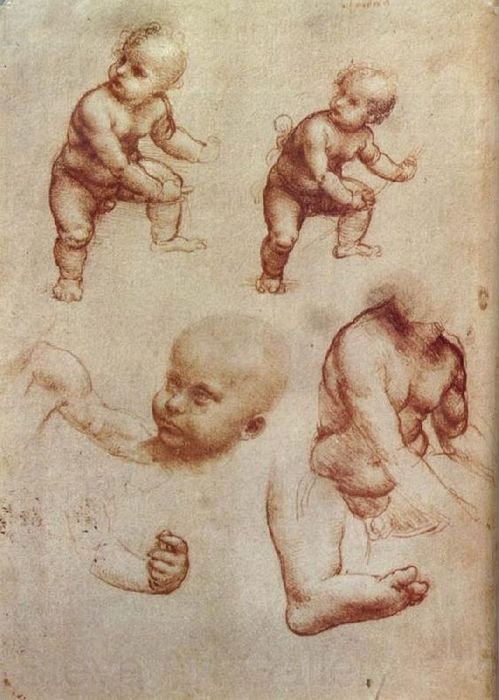I love these drawings by Leonardo da Vinci
The toddler is captured just moving through what we Alexander teachers call ‘monkey position’ and he is balanced and grounded with a lengthened spine, even though he is bending forwards and looking over his right shoulder.
This is such a basic and useful movement and most children use it regularly but unfortunately we often lose this as we grow into adulthood and we often gather habits of mis-use and curl over instead, which puts pressure on our spines – and squishes our lungs and internal organs – fortunately we can re-learn how to use our bodies in the way we used to do when we were children.
F M Alexander used to call this ‘the position of mechanical advantage’ and it is possible to see why he did so at it is such a good way of using body when we want to bend forwards, utilising the large hip joints in order to allow the body to fold forwards and protecting the spine as we do so.
However, FM’s students soon found a more user-friendly name for this way of using the body and ‘monkey position‘ it became from then on!

Hello Hilary, I am the AT teacher who has developed Posture Release Imagery and now the “ventral surface supporting log,” described in the link below. Your comments about da Vinci’s illustrations are right on. The grounded yet versatile body of the child definitely shows positions of mechanical advantage and what I call the healthy dorsal-ventral relationship. This PDF, https://drive.google.com/file/d/0Bz8Bej68FhX5U0hOWFVSSEJOZXM/view?usp=sharing , shows a way of improving this relationship on a prone and semi-prone “log.” Thanks for posting these illustrations.
Hello John
Thanks for your comment. whilst I do find the occasional use of imagery to be useful in AT lessons, I avoid using them for the most part and prefer to keep to verbal instructions, hands-on work and Alexander’s ‘Directions’.
The use of images can occasionally make something more understandable to a pupil but they can also create a mis-understanding of a concept, as each person will have their own variations and interpretations of images, which can confuse the issue.